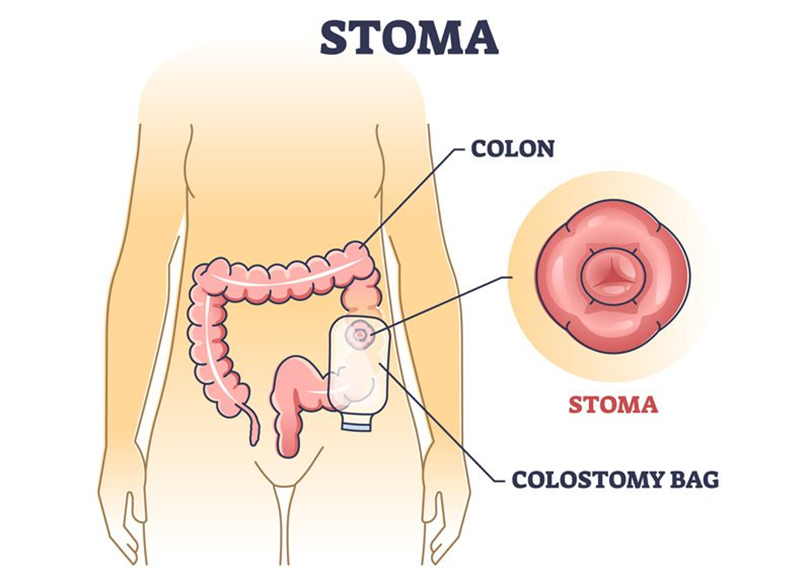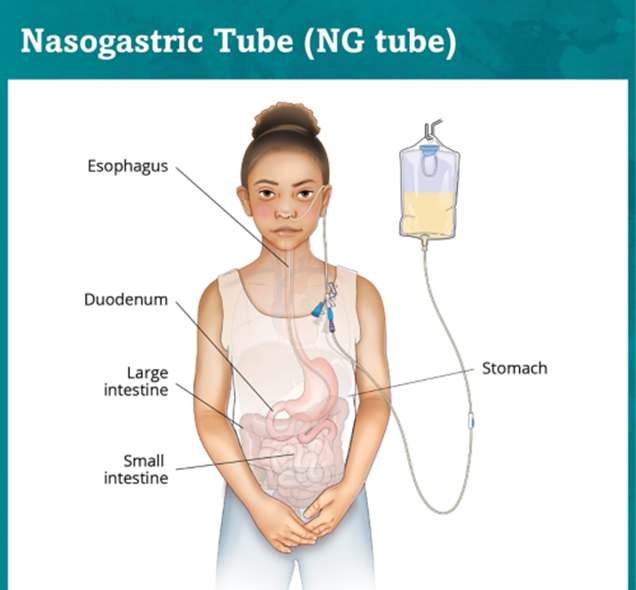A client has been admitted with new-onset status epilepticus. Which seizure precautions would the nurse implement? (Select all that apply.)
Suction equipment at the bedside.
Continuous sedation.
Side rails padded.
Bed in low position.
Intravenous (IV) access.
Correct Answer : A
Choice A Reason:
Suction equipment at the bedside.
Having suction equipment at the bedside is crucial for a client with status epilepticus. During a seizure, there is a risk of aspiration due to excessive salivation or vomiting. Suction equipment allows the nurse to quickly clear the airway, preventing aspiration and ensuring the client can breathe properly. This precaution is essential to maintain the client’s airway and prevent complications such as aspiration pneumonia.
Choice B Reason:
Continuous sedation.
Continuous sedation is not typically a standard precaution for all clients with status epilepticus. While sedation may be necessary in some cases to control seizures, it is not a universal precaution. The primary goal is to stop the seizure activity and stabilize the client. Continuous sedation may be used in specific situations under close medical supervision, but it is not a general precaution that nurses implement for all clients with status epilepticus.
Choice C Reason:
Side rails padded.
Padding the side rails of the bed is an important precaution to prevent injury during a seizure. Clients experiencing seizures may have uncontrolled movements, which can lead to injury if they hit the hard surfaces of the bed. Padded side rails help to cushion these impacts, reducing the risk of bruises, cuts, or fractures. This precaution is essential for ensuring the client’s safety during seizure activity.
Choice D Reason:
Bed in low position.
Keeping the bed in a low position is another important safety measure. If a client with status epilepticus were to fall out of bed during a seizure, the lower height reduces the risk of serious injury. This precaution helps to minimize the impact of any potential falls, ensuring the client’s safety. It is a simple yet effective measure to prevent harm during seizure episodes.
Choice E Reason:
Intravenous (IV) access.
Establishing intravenous (IV) access is critical for a client with status epilepticus. IV access allows for the rapid administration of medications needed to control seizures and manage the client’s condition. In an emergency, quick access to the bloodstream is essential for delivering life-saving treatments. This precaution ensures that the medical team can promptly and effectively intervene to stop the seizure activity.
Nursing Test Bank
Naxlex Comprehensive Predictor Exams
Related Questions
Correct Answer is D
Explanation
Choice A: Rosebud-like Stoma Orifice
A rosebud-like stoma orifice is typically a normal appearance for a new stoma. The stoma should be moist, pink to red in color, and protrude slightly from the abdomen, resembling a rosebud. This appearance indicates good blood flow and proper healing. Therefore, this finding does not usually require immediate reporting to the provider.
Choice B: Stoma Oozing Red Drainage
While some minor bleeding or oozing can be normal immediately after surgery, persistent or significant red drainage from the stoma could indicate a complication such as infection or trauma to the stoma site. This finding should be monitored closely, but it is not as immediately concerning as a purplish-colored stoma, which indicates a more severe issue.
Choice C: Shiny, Moist Stoma
A shiny, moist stoma is a sign of a healthy stoma. The stoma should always appear moist and slightly shiny due to the mucus produced by the intestinal lining. This finding is normal and does not require reporting to the provider.
Choice D: Purplish-Colored Stoma
A purplish-colored stoma is an immediate concern and should be reported to the provider. This discoloration can indicate compromised blood flow to the stoma, which can lead to tissue necrosis if not addressed promptly. Ensuring adequate blood supply is crucial for the stoma’s viability and the patient’s overall health. Immediate medical intervention is necessary to prevent further complications.

Correct Answer is ["A","B","E"]
Explanation
Choice A: Nephropathy
Diabetic nephropathy is a common microvascular complication of diabetes mellitus. It is characterized by damage to the small blood vessels in the kidneys, leading to progressive kidney disease. The condition is often identified by the presence of protein in the urine (proteinuria) and can progress to end-stage renal disease if not managed properly. The primary mechanism involves hyperglycemia-induced damage to the glomeruli, the filtering units of the kidneys. This damage results in increased permeability and eventual scarring, impairing kidney function. Effective management of blood glucose levels and blood pressure is crucial in preventing or slowing the progression of diabetic nephropathy.
Choice B: Neuropathy
Diabetic neuropathy refers to nerve damage caused by chronic high blood sugar levels. It is another significant microvascular complication of diabetes. This condition can affect various types of nerves, including sensory, motor, and autonomic nerves. Symptoms may include pain, tingling, numbness, and loss of sensation, particularly in the extremities. Diabetic neuropathy can lead to severe complications such as foot ulcers and infections, which may necessitate amputation. The pathophysiology involves hyperglycemia-induced oxidative stress and inflammation, leading to nerve damage. Tight glycemic control and regular monitoring are essential in managing diabetic neuropathy.

Choice E: Retinopathy
Diabetic retinopathy is a leading cause of blindness among adults with diabetes. This microvascular complication involves damage to the small blood vessels in the retina, the light-sensitive tissue at the back of the eye. There are two main types: non-proliferative and proliferative retinopathy. Non-proliferative retinopathy is characterized by microaneurysms, hemorrhages, and exudates, while proliferative retinopathy involves the growth of new, fragile blood vessels that can bleed and cause retinal detachment. The primary cause is prolonged hyperglycemia, which damages the retinal blood vessels. Regular eye examinations and good glycemic control are vital in preventing and managing diabetic retinopathy.
Choice C: Peripheral Vascular Disease
Peripheral vascular disease (PVD) is not classified as a microvascular complication but rather a macrovascular one. It involves the narrowing or blockage of the blood vessels outside the heart and brain, primarily affecting the arteries in the legs. PVD is associated with atherosclerosis, where plaque builds up in the arterial walls, leading to reduced blood flow. Symptoms include leg pain, cramping, and ulcers. While PVD is a significant concern for individuals with diabetes, it is not considered a microvascular complication.
Choice D: Cerebral Vascular Disease
Cerebral vascular disease, which includes conditions such as stroke and transient ischemic attacks (TIAs), is also a macrovascular complication rather than a microvascular one. It involves the blood vessels supplying the brain and is primarily caused by atherosclerosis and hypertension. Diabetes increases the risk of cerebral vascular disease due to its association with other risk factors like high blood pressure and dyslipidemia. However, it is not classified as a microvascular complication.
Whether you are a student looking to ace your exams or a practicing nurse seeking to enhance your expertise , our nursing education contents will empower you with the confidence and competence to make a difference in the lives of patients and become a respected leader in the healthcare field.
Visit Naxlex, invest in your future and unlock endless possibilities with our unparalleled nursing education contents today
Report Wrong Answer on the Current Question
Do you disagree with the answer? If yes, what is your expected answer? Explain.
Kindly be descriptive with the issue you are facing.
